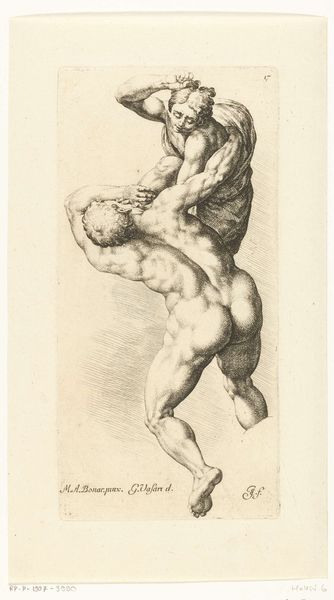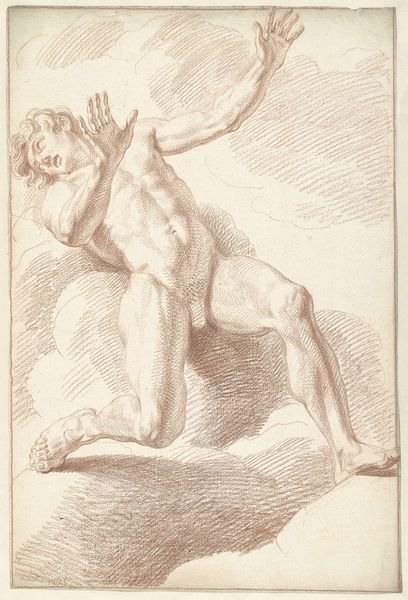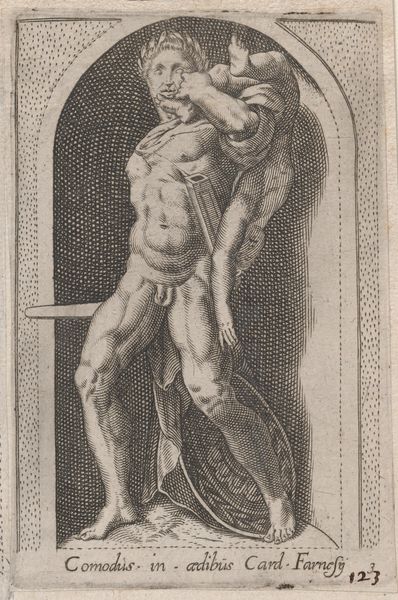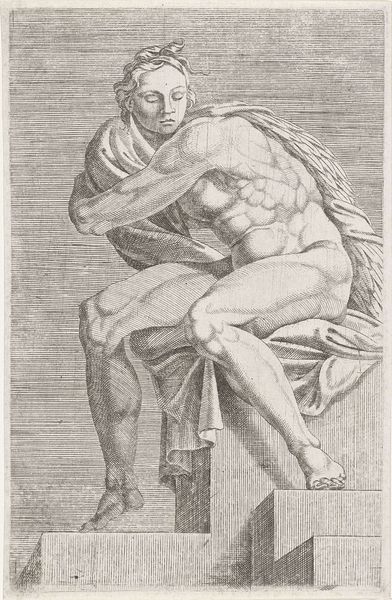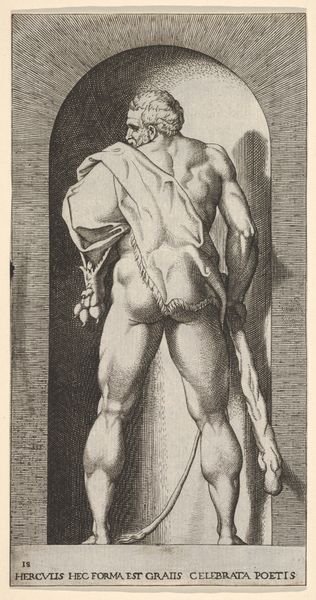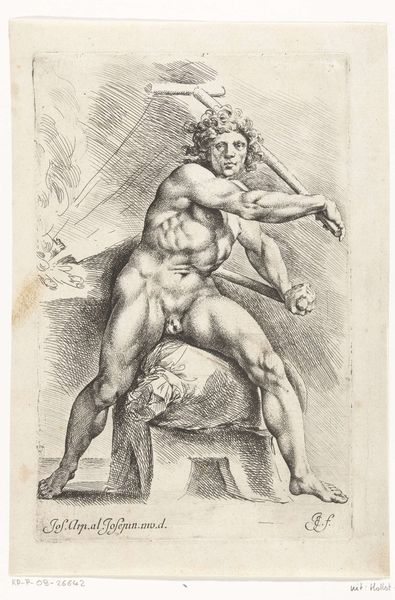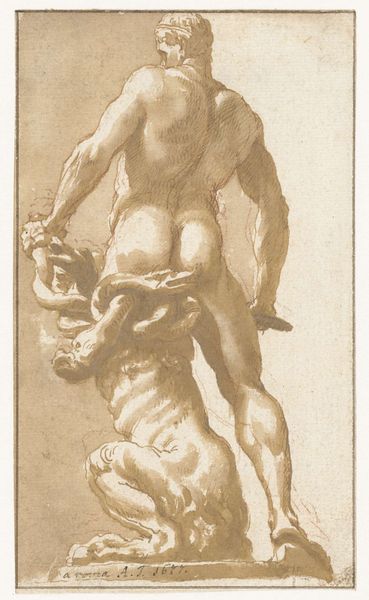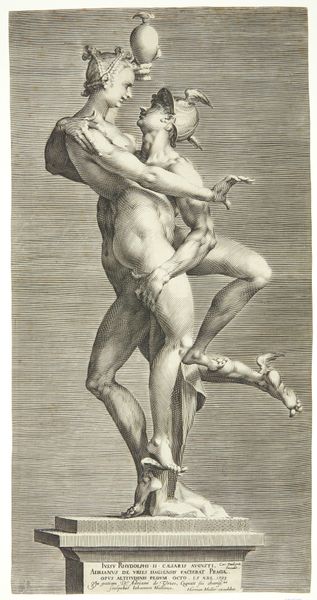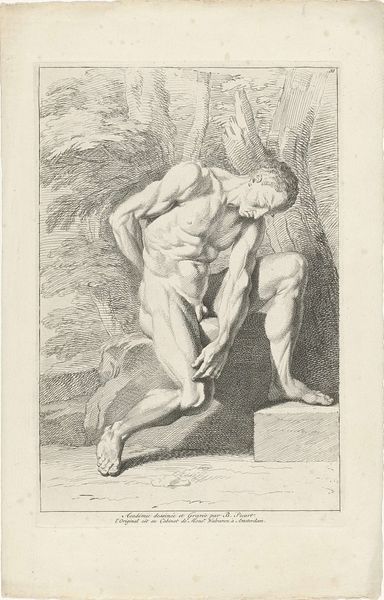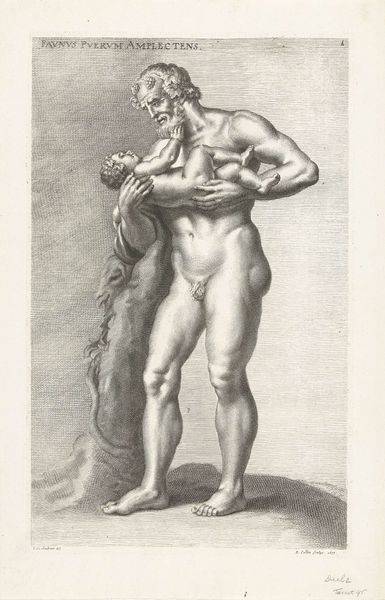
Two damned souls fighting, after Michelangelo's 'The Last Judgment' fresco in the Sistine Chapel 1580
0:00
0:00
drawing, print, engraving
#
drawing
# print
#
mannerism
#
figuration
#
form
#
men
#
line
#
history-painting
#
italian-renaissance
#
engraving
#
male-nude
Dimensions: Sheet: 6 1/4 × 6 9/16 in. (15.9 × 16.7 cm)
Copyright: Public Domain
Editor: Here we have Cherubino Alberti's 1580 engraving, "Two Damned Souls Fighting, after Michelangelo's 'The Last Judgement' fresco." It's intense, you can really feel the struggle. What strikes me most is how Alberti translates Michelangelo's figures into this detailed, linear print. What do you make of it? Curator: This print is fascinating as an example of how artworks circulate and gain new meaning. Alberti isn't just copying Michelangelo; he's actively reinterpreting the fresco for a 16th-century audience already deeply familiar with the Sistine Chapel. How do you think this print functioned within that visual culture? Was it devotional, educational, or something else entirely? Editor: Perhaps a bit of all three? Prints were more accessible than the fresco itself, so it democratizes Michelangelo's vision, in a way. Yet, it still conveys that overwhelming sense of divine judgment. Curator: Precisely. And consider the politics of imagery. The Last Judgement itself was controversial. By circulating printed versions, artists like Alberti participated in that larger discourse. It is worth noticing that the original title is not quite correct, and one should read instead 'Two Damned Souls fighting inspired by Michelangelo’s “The Last Judgment". Editor: That's a good point, the title makes it very different! So, it’s not just about art for art’s sake, but art engaged in religious and political debates. Curator: Exactly. Understanding the original intent is a minefield, and how a work gains a life of its own adds to the many ways it could be interpreted. Editor: That makes me look at this print—and Michelangelo’s fresco—in a totally different light. Curator: Me too. The dialogues that history allows for is a good start to appreciating art and artmaking practices across time.
Comments
No comments
Be the first to comment and join the conversation on the ultimate creative platform.

